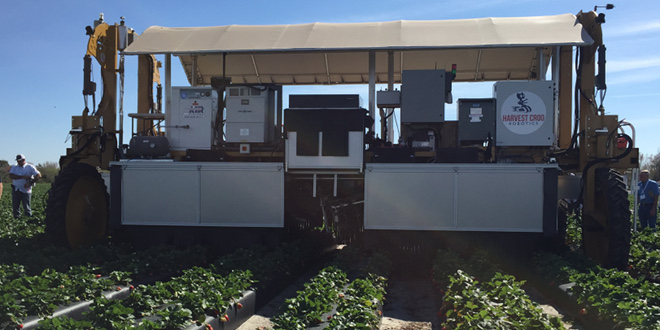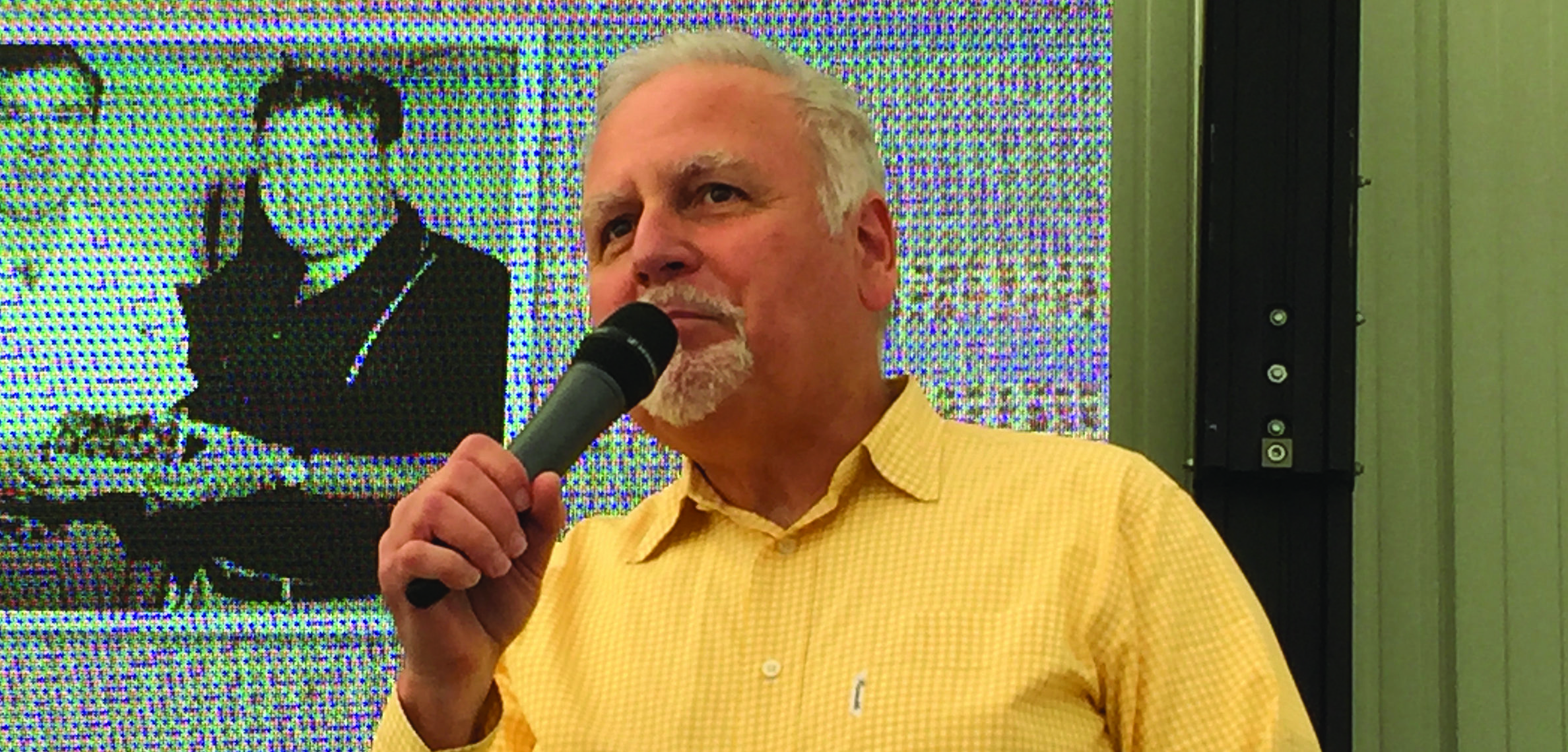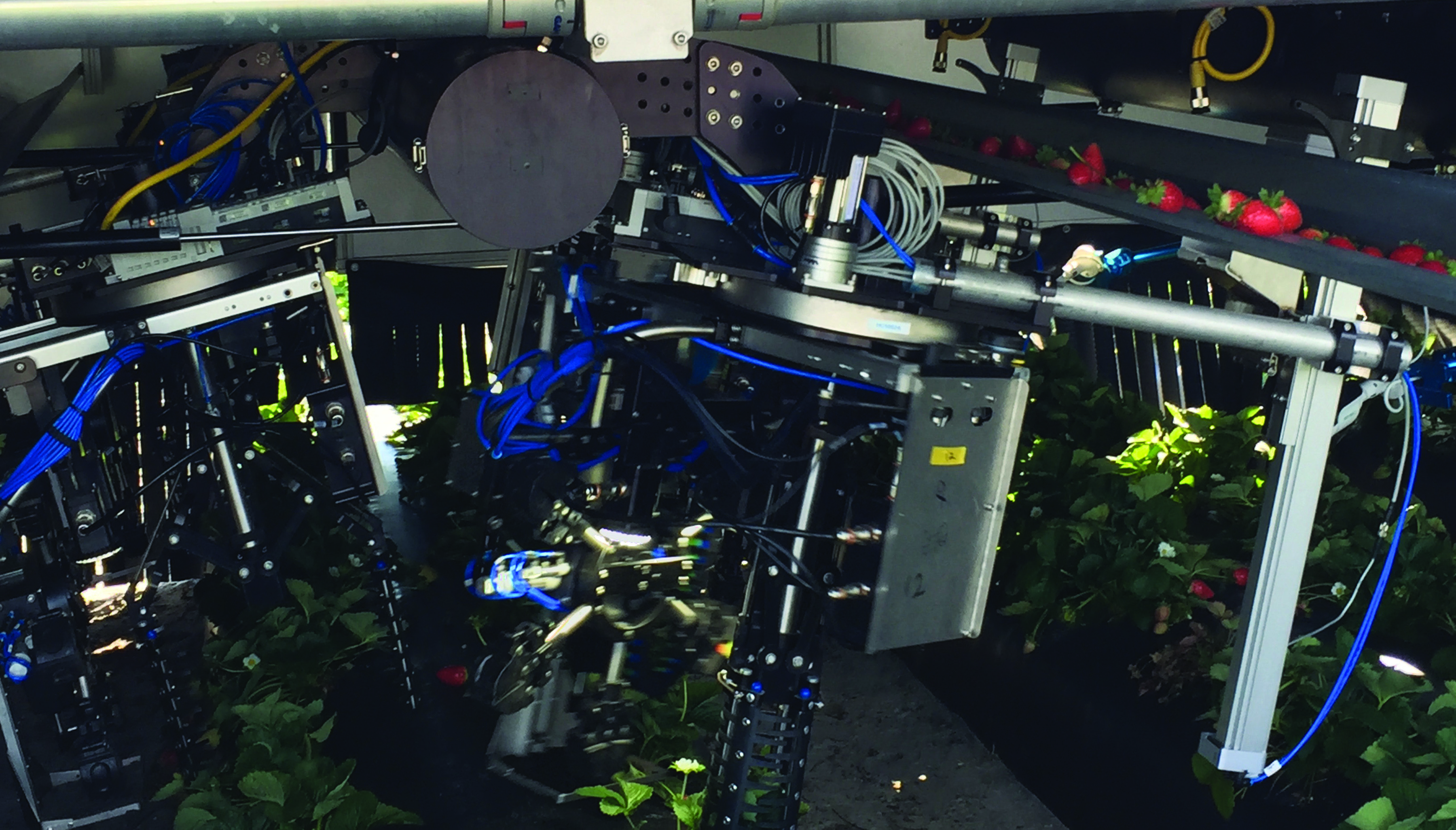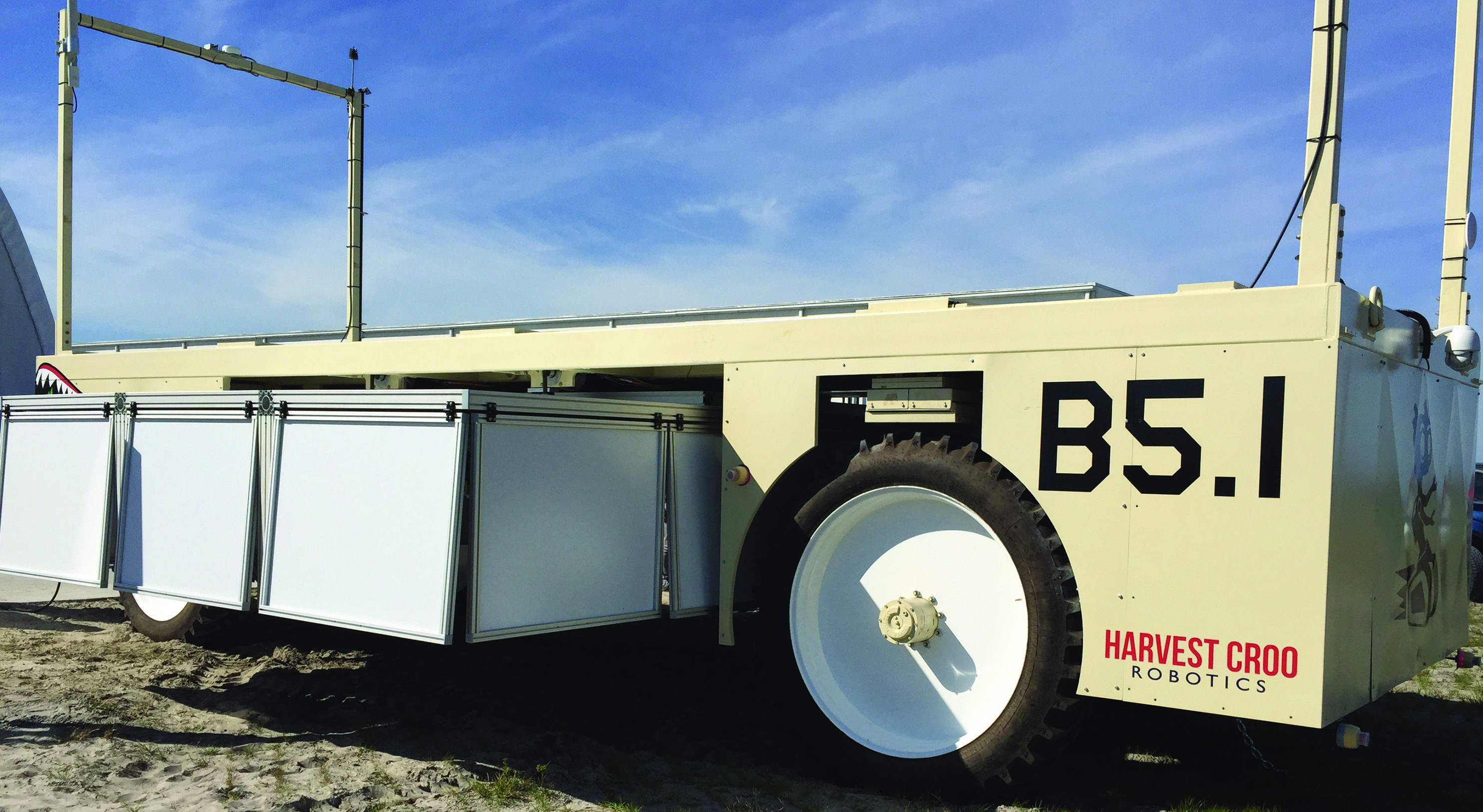

Mar 26, 2019Harvest CROO Robotics strawberry harvester nears fruition
After five years of development, Harvest CROO Robotics has a robotic picker that is able to look at a strawberry plant and determine which among the berries on the plant are ripe, all through artificial intelligence.


Plant City, Florida-based Wish Farms owner Gary Wishnatzki said two-thirds of the nation’s strawberry industry has invested in the machine, all hoping that an answer to their labor issues will materialize.
“Our tagline is ‘Making farming fun again,’” Wishnatzki recently told attendees at the North American Strawberry Symposium/North American Strawberry Growers Association Annual Meeting in Orlando, Florida.
“Over last 15 years we’ve heard from growers who are dealing with labor issues and government and saying it just isn’t fun anymore,” said the co-founder and managing partner of Harvest Croo Robotics. “Our goal is to put the fun back in farming.”
Wishnatzki and Paul Bissett, Harvest Croo CEO, spoke at the strawberry symposium and hosted a tour of Wish Farms’ 1,600-acre (625 acres of planted strawberries) G&D Farms in Duette, Florida.
“We have over four miles to the back of this farm,” Wishnatzki said. “I believe this is the largest contiguous strawberry farm in the U.S. Some are bigger, but not one that’s a contiguous piece of property.”
The current business model indicates the Harvest Croo machines will be made available to farms on a service-level agreement in which growers will pay for use of the harvester in the same way they pay their human pickers – basically on a modified piece rate basis.
Wishnatzki cited statistics showing a shrinking agriculture labor force and demographics that indicate the decline of the younger workforce needed to harvest specialty crops such as strawberries.
“The problem has nothing to do with politics,” he said. “We’re seeing fewer and fewer people coming out in field to do the work and we’re now having to rely on H-2A. H-2A is a short-term solution for a long-term problem.”
“My experience at picking strawberries is it is a young person’s game,” Wishnatzki said. “Harvesting strawberries hasn’t changed in the past 100 years. We’re still doing it the same way. If we don’t have young people coming to the field, we’re going to have to have to rely on robotics.”
Skepticism, collaboration


Wishnatzki said despite hearing the word ‘impossible’ a lot, he also has been told development of a robotic harvester should be doable because “we’ve put people on the moon. It has not been a totally smooth ride from where we started to where we are today. We’re not quite commercialized yet, but we’re on the road to do it.”
Having encountered some skepticism from growers regarding the potential for machines to harvest delicate fruit requiring human touch and inspection, Wishnatzki said advances in computer processing power and visioning has made the technology feasible.
Rex Lee, a consultant on the project who is CEO of Pyramid Imaging, helped Croo Robotics develop its vision system.
“Dr. Lee told me that if a solution requires laws of physics to be broken, then it is impossible. If it is just an engineering problem, nothing is impossible,” Wishnatzki said.
Collaboration has been vital to the development of technology. Despite the tour location, “this is not a Wish Farms project,” Wishnatzki said.
Large companies that include California Giant Berry Farms, Naturipe, Driscoll’s and others have helped fund the project and expertise has been provided by the University of Florida and the University of South Florida.
Croo Robotics has developed several patented products and trade secrets, including development of the “Pitzer Wheel” by company co-founder and chief technology officer Bob Pitzer. “It really gets us to the commercial speed we need in picking, and is the very unique thing that gets us to where we need to be.”
The wheel has a series of claws on it that allows the ability to pick the plant very rapidly. “It’s not a multi-access robotic arm that has to grab something and move it somewhere,” Wishnatzki said. “The wheel maneuvers the claw to pick the strawberry. The wheel spins to give us the speed to pick the plant much more rapidly.”
The wheel grabs the berry with the soft silicone rubber claw, with a spinning action that replicates what a human picker does, breaking off the stem.
“The stereovision system used in the robot is a trade secret, providing us with some proprietary ways we’re using different light spectrums,” he said.
“We’re well above 98 percent accuracy on picking properly colored, ripe fruit,” Wishnatzki said. “Stereovision has been around for decades, but the difference now is the processing power that has made all of this possible. Just in the last five years, we’re processing something like 30 gigabytes a second and doing hundreds of image pairs. It’s an amazing amount of computing power. Twenty years ago that just wasn’t possible.”
Making an impact


Duette, Florida.
Wishnatzki equated the project’s status with cell phone technology in the early 1980s.
“Nobody imagined the smart phone of today and all of the applications you’re going to be able to do with that,” he said. “Right now, growers just want to make a phone call, they just want to pick berries.
But we need to be thinking about all of the added benefits that are going to come after we are done picking berries.”
Wishnatzki anticipates the Harvest Croo Robotics system will eventually:
- Lower harvest costs.
- Work on weekends.
- Improve quality.
- Save energy and reduce cooler bottlenecks.
- Allow mechanical scouting of fields.
- Conduct runner cutting and pruning.
- Increase yields by at least 10 percent.
“It will be pretty much a slam dunk for us to lower harvest costs the way harvest rates are going, and enable working on weekends and a regular pick schedule – that’s going to be huge. Right now our workers don’t always show up on Saturday and Sunday.”
“Quality will improve because we’re going to avoid picking during the hottest parts of the day. We’ll be picking 24 hours a day, with more picking at night when the berries are cooler and less likely to bruise,” Wishnatzki said.
“When you think about the capacity of commercial coolers, they’re limited by the hot part of the day when you get this bottleneck of warm fruit coming in during the afternoon,” he said. “If you’re picking berries over a 24-hour day, you eliminate the problem, and actually double the capacity of the coolers and reduce the energy use in the process because you’re cooling cooler berries than hot berries.”
Mechanical scouting will be done using hundreds of images per plant every three days. Using AI (artificial intelligence), there’s going to be different algorithms that will not only identify problems, but locate them to a specific GPS location.
Production forecast models also will improve with the Harvest Croo Technology, Wishnatzki said.
“Currently, at Wish Farms, we have three our four full-time people that all they do is go out and count blooms and try to determine what our production is going to be like in three or four week,” Wishnatzki said. “It’s such a small sample size and inexact science right now. I believe we’re going to get much better forecasting once we’re taking all of these images of the plants.”
Solution seekers


harvester. Its developers believe the unit is within a couple of years of full commercialization.
Grow system structures will be important to maximize robotics use.
“With this robot, we’re going to have to keep the plant size pruned and trimmed. In the early years we’ll probably be doing some hand trimming.
Hopefully, we’ll be partnering with some universities to get some robotic ways to prune plants and cut runners. We’re really going to try to eliminate labor.
“I think we’re going to increase yields by at least 10 percent,” Wishnatzki said. “We will be efficient in managing the amount of fruit we are packing in clamshells.”
“Our goal is not to require growers to change how they grow strawberries and invest in expensive equipment systems,” he said. “There may be some small differences that may have to do with spacing or something but our goal is to be able to pick on standard beds which is what is going to get us commercialized and accepted. If growers are going to have to change and invest in expensive grow systems that would be a major barrier.
“That’s the reason 70 percent of the strawberry industry has invested with us because they see this is the best path to commercialization,” he said.
For more information on Harvest Croo Robotics, visit www.harvestcroo.com.
– Gary Pullano, Managing Editor














